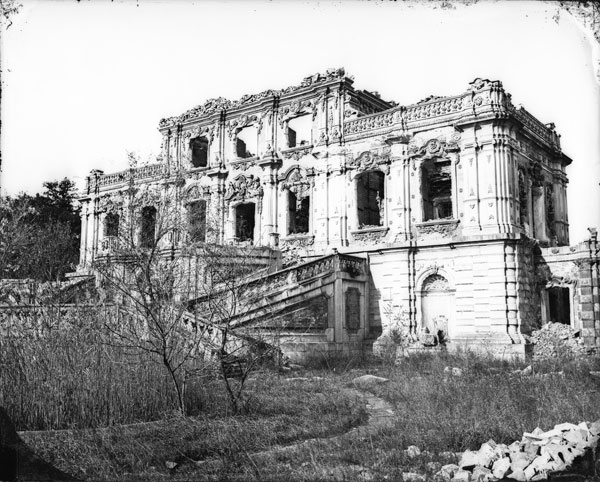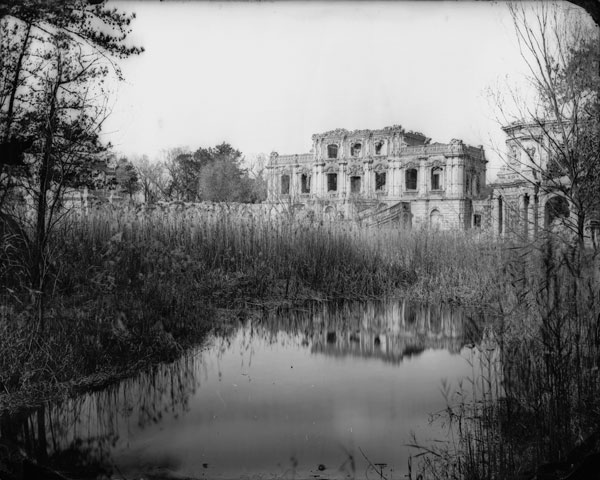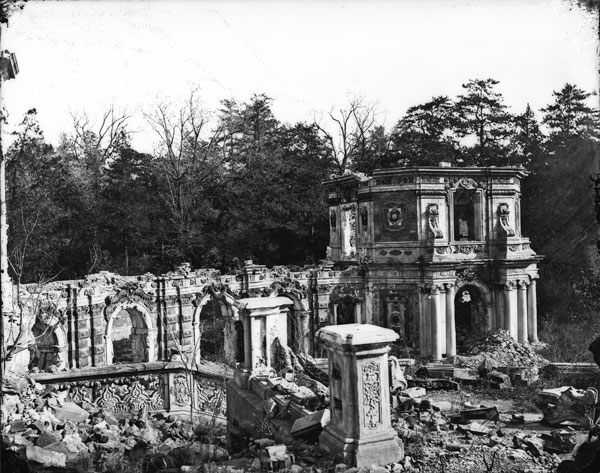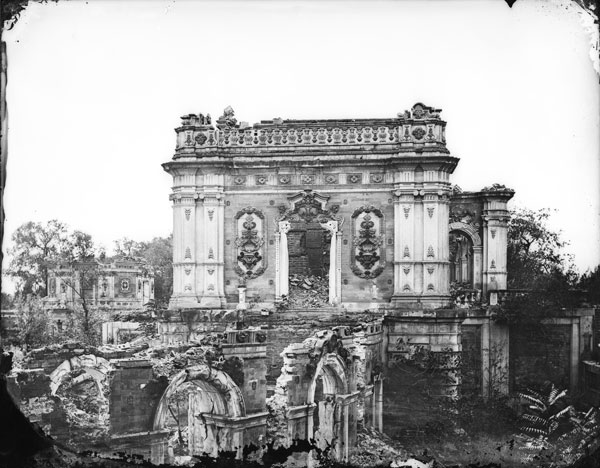|
|
||
|
|
||
|
|
|
|



RUINS & MEMORY
While the treasures of the Yuanmingyuan were widely distributed among European
art collections, the ruins of the European palaces—which had been made of
stone, marble, and sturdy materials—mostly remained in recognizable form after
1860. The ruins were often visited by Western residents of Beijing on outings.
They were frequently photographed in the 1870s, when photography became more
widespread than it had been in the 1860s.
In the succeeding decades, the site was continually plundered for its raw
materials and remaining artifacts. During the Boxer uprising and the siege of
Beijing in 1900 to 1901, Western troops participated in further plunder. But much
of the subsequent looting and damage was the work of local Chinese vandals, who
sold antiquities in the local markets. [11] Photographs
show how the ruins of the European palaces diminished in scale over the years; distinguished in this regard is a run of photos taken in
1873 by Ernst Ohlmer (1847–1927), a German customs official. [12]

Ernst Ohlmer’s 1873 Photos of the Ruins
In the decade following the torching of the Yuanmingyuan the area was officially
off-limits, but it was difficult for the eunuchs and watchmen to secure.
Looting and outbreaks of fire contributed to the decay of the garden. Ernst Ohlmer, a young German clerk, was discovered
in one
of the buildings and, as he had not stolen anything, was pardoned. In 1873, just 13 years after the sack, Ohlmer photographed the ruins of the
European palaces, leaving the earliest known visual record of the devastated
site. Although the buildings are damaged and the grounds overgrown with weeds,
the basic architecture remains recognizable. The following 12 glass negatives
were the source of a 2010 exhibition at Beijing's China Millennium Monument.
Xieqiqu, south façade
Built in 1751, this was the first pavilion in the Xiyanglou.
Depicted in Engraving 1.
[ohlmer_1873_a]
This Xieqiqu panorama shows the lake in front overgrown with weeds.
[ohlmer_1873_b]
Xieqiqu, Music Pavilion
Not depicted in the 20 engravings, the Music Pavilion overlooked the lake and
was connected by a bridge to the main part of the Xieqiqu.
[ohlmer_1873_c]
Xieqiqu, eastern side of the main building
The ornamentation on this imposing Western structure had Chinese elements. The
Music Pavilion is visible in the back left. Depicted in Engraving 3.
[ohlmer_1873_d]
Pavilion Harmonizing Surprise and Delight, Xieqiqu 諧奇趣










